Toyota Prius Business Edition

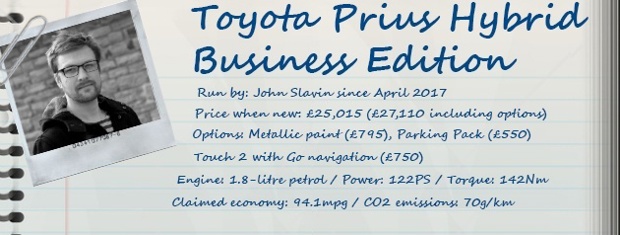
- Hello, hybrid
- The most relaxed way to travel
- Constructive criticism
- How many countries on one tank of petrol? Part one
- How many countries on one tank of petrol? Part two
- Should you spend extra on a plug-in hybrid?
- The future is now
- My Prius has Intelligent Park Assist, but it’s often not very intelligent at all.
- Happy 20th, Toyota Prius
Hello, hybrid
We welcome the most famous hybrid of them all to our fleet - meet the Toyota Prius. Will it be a welcome addition?

Date: 31 March 2017 | Current mileage: 130 miles | Claimed economy: 94.1 mpg | Actual economy: 61.2mpg
The word hybrid is so synonymous with the Toyota Prius, many motorists don’t even know there are any alternatives. It’s more or less the default choice in the minds of those who want strong economy and green credentials. That’s why I’ve decided to spend six months with one - will it prove to be the ultimate eco car?
I’ve gone for the sensible Business Edition specification, which is reasonably priced yet comes with plenty of standard equipment. Reasonably priced is a relative term, though – because our Prius cost £25,015 before options, or £27,110 with them. It’s not exactly what you would call cheap.
The Prius is a big car though, comparable in size to the likes of the Ford Mondeo, plus it comes with an automatic transmission as standard. And then there’s the tantalising prospect of 94.1mpg, which is what the official figures say the Prius is capable of.
It isn’t capable of that, of course. Nothing this side of the USS Enterprise is capable of that. But so far I’ve averaged more than 60mpg without trying and the engine isn’t even run in, so I’m not too concerned about what my fuel bills are going to be like over the next few months.

The latest car is much better to drive than the old one
The hybrid system is an evolution of the one used in the last Prius. The battery pack is smaller and lighter, plus the aerodynamics have been improved – all of which adds up to better efficiency. But moreover, the car is really relaxing to drive, even in typically frustrating stop-start traffic.
At low speeds the Prius often runs around on battery power only, so it’s nearly silent – but even when the engine kicks in it is barely noticeable. Accelerate hard and it makes a sort of mooing noise, but on an average journey that only needs to happen for a few seconds – the rest of the time it’s all serene.
So first impressions are very good. I feel relaxed and calm whenever I’m behind the wheel, which takes all the stress out of trips to the shops or my daily commute. Sure, it’s not exactly fun, but even when it comes to a twisting road the Prius is much improved over the old car.
It’s less prone to wobbly body roll than the old car, meaning you can drive in a rural route without feeling sick. You won’t want to throw it into bends with any verve, but it flows along nicely and doesn’t do too much bouncing around. So it’s all good so far – but we’ll see how I feel in six months...
The most relaxed way to travel
The Prius isn't a 'driver's car' but that really doesn't matter, because it's so easy to live with.
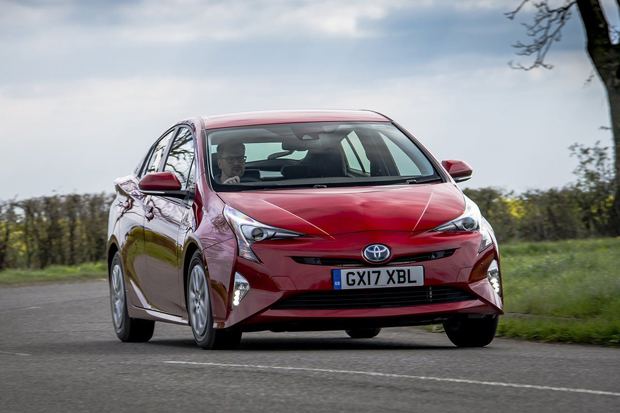
Date: 14 April 2017 | Current mileage: 203 miles | Claimed economy: 94.1 mpg | Actual economy: 62.4mpg
The Prius tends to get a lot of stick from the motoring press because it’s not a ‘driver’s car’, whatever that means. The CVT gearbox is slated for being loud and coarse and the lack of feedback upsets the type of person who likes to use words like ‘oversteer’.
But if you’re just a regular person, none of those criticisms actually matter. In fact, the opposite is true for the average driver – because if you just want to go to the shops, or get to work, then the Prius is about as close to perfect as a car can get. It’s quiet, effortlessly easy to drive and very comfortable.
Sure, it’ll groan a little bit under hard acceleration, but on a typical day most people will only accelerate hard to get up to motorway speeds or to overtake slow traffic. And the rest of the time the Prius is almost silent, which makes it feel serene and relaxed in traffic or when cruising on the motorway.

CVT transmission is smooth and usually quiet
But even if you have to travel along a country road it’s not bad. The suspension soaks up most lumps and bumps and the steering is accurate. It’s not going to excite, but it copes well enough if you’re not in a rush and is an improvement over its wallowy, top-heavy predecessor.
Since the Prius is so relaxing and easy to drive, it means you can sit back and enjoy some music, rather than getting annoyed about a queue of stopped cars and an aching clutch foot. And I think more drivers will appreciate that sort of character than nimble, agile handling on twisting roads.
I do, most of the time. I thoroughly enjoyed my previous MX-5 on the right road, but for simply getting to and from the office or heading off on a long motorway trip the Prius is far easier to live with. And since I do more long motorway journeys than anything else, I’m really happy in the Prius.
Constructive criticism
Every time a journey ends, the Prius scores your eco friendliness in an effort to help reduce fuel consumption.
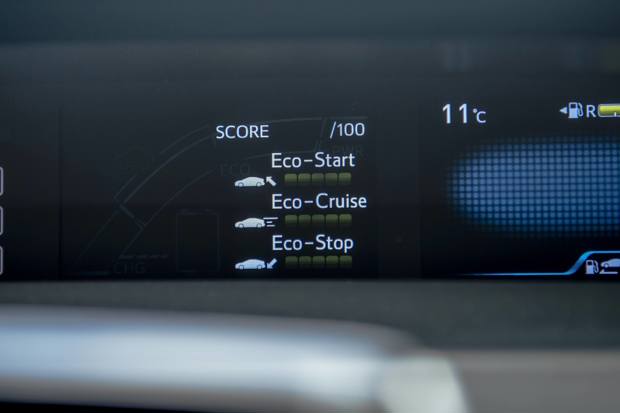
Date: 28 April 2017 | Current mileage: 768 miles | Claimed economy: 94.1 mpg | Actual economy: 62.4mpg
The first few days in a Toyota Prius are a little odd, but once you recalibrate your brain the whole driving experience becomes relaxed and effortless. That doesn't just contribute to your mood when driving, but to the car's fuel economy. Gentle acceleration and braking make a big difference - and the car actively encourages you to take a chilled out, laid back approach to every trip.
In fact, the car takes that idea so seriously that it grades your performance at the end of every journey, scoring air conditioning use, acceleration, braking and cruising, to give an overall eco rating out of 100. And lately I’ve been on a constant mission to do better – with mixed results.
You see, the weird thing about the system is that a very high eco rating doesn’t actually equate directly to the best fuel economy. Sometimes I’ve not scored all that highly, yet achieved upwards of 70mpg, while other days I’ve got an almost perfect eco score and managed nearer to 60mpg.
Toyota gives drivers plenty of other tools to help improve economy too. Drive modes - Eco, Normal and Power – make a difference to the way the throttle responds, among other things, with Eco reacting more progressively and gently when you step on the accelerator. But most of my best eco figures were achieved in Normal mode, so the usefulness of the modes is debatable.

Changing the drive mode can help save fuel
An additional EV mode is also available, with its own button. This does what you’d expect – it makes the Prius behave like an electric vehicle. Sort of. Top speed in pure EV mode isn’t very high and range is quite small, so for trickling along in traffic it’s good, but pick up the pace and the engine will come alive to take some of the strain.
There’s also a regenerative braking mode, which slows the car down when lifting off the throttle and helps put some charge back in the battery pack. This is most useful down hills and in stop start traffic but, annoyingly, if you have that mode engaged the adaptive cruise control doesn’t work. And it doesn’t tell you – I had to figure out why it wasn’t working for myself.
The Prius likes gentle driving, but it also prefers a gentle climate control setting. Choosing 'low' at full blast makes the Prius angry and, quite unlike The Incredible Hulk, that makes it less green. Fortunately, there are two auto modes for the climate control system – auto fast and auto eco. Fast is for those sweltering summer days, while eco is more steady and gentle at cooling the cabin.
With all these tools, most drivers will find a sweet spot where they can set the car up just the way they want it, making it easy-to-drive and comfortable, but also economical. For me, I tend to just leave everything in ‘Normal’ and it works just fine.
How many countries on one tank of petrol? Part one
John reckons he can get the Prius through the UK, France, Belgium, The Netherlands, Germany and Luxembourg on one tank of petrol.
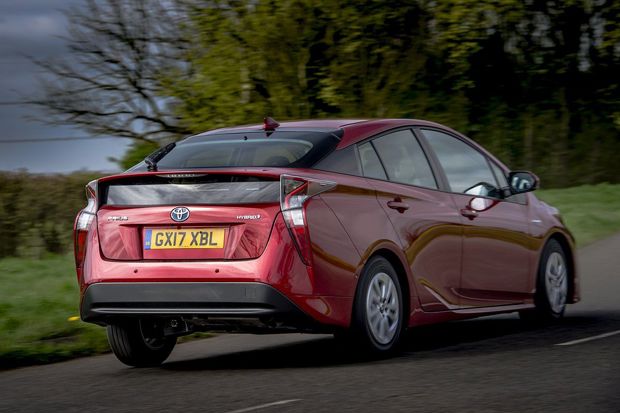
Date: 12 May 2017 | Current mileage: 1395 miles | Claimed economy: 94.1 mpg | Actual economy: 69.8mpg
Our Prius has a 43-litre fuel tank. That’s not the most exciting statistic in the world, but a few taps on the calculator reveals that, based on the official economy figure of 94.1mpg, the car should be able to travel for 890 miles between fill ups. But official figures aren’t known for being realistic...
So, I went back to my calculator (It was a quiet day at the office) and discovered that, using my current average real world figure of 64.1mpg, I could cover 580 miles between fill-ups. Which still sounds pretty far. In fact, it’s so far that you could, in theory, see six different countries before visiting a petrol pump. That’s what Google Maps reckons, anyway.
And what’s a theory if you don’t test it? The plan was to set off from Lincolnshire and drive to Luxembourg, via the UK, France, Belgium, The Netherlands, and Germany, covering just over 520 miles and cutting things pretty fine unless everything went to plan and I didn’t get lost. I booked the ferry from Dover to Dunkirk, filled up to the brim with high octane and set off.
By the time I reached an overnight stop near Dover ferry port I had barely used any fuel, according to the gauge. I’d actually used plenty of fuel, obviously, but filling up the tank to the point where it was about to overflow meant I probably had an extra litre or so to play with before the fuel gauge started to drop.
The route. You can zoom in on this map.
So what could have been a tricky trip was starting to look perfectly achievable. By the time I’d crossed the channel it was looking even more easy because Google had, apparently, counted the distance covered by the ferry in its overall mileage calculation – and the crossing required no fuel at all.
Actually, even the bits where I was getting on and off the ferry required no fuel, since the Prius used its battery and motor for all the low-speed queueing. By the time I got to the Belgian border any concern about having enough fuel to finish the whole trip had, more or less, gone. It was starting to look easy.
That gave me an opportunity to appreciate some of the features Toyota has fitted to make European trips easier. First of all, the entirely digital instrument display can be changed between mph and kph with a couple of button presses, making foreign speed limits extremely straightforward.
Moreover, the Prius gives advice every time you cross a national border, explaining the speed limits, drink drive limits and some of the legal requirements for things that need to be carried in the car, like spare bulbs. For what is typically considered an urban vehicle, the Prius was proving to be quite the tourer. But would I make it to Luxembourg without a fill-up?
How many countries on one tank of petrol? Part two
So far, so good. Looks like you really can drive through six countries on one tank of fuel. Easily. Well done Prius.

Date: 26 May 2017 | Current mileage: 1502 miles | Claimed economy: 94.1 mpg | Actual economy: 69.1mpg
When I started my cross-continental journey I was worried I might not make it to Luxembourg on one tank. But by the time I had crossed Belgium and entered The Netherlands, I still had almost half a tank of fuel. Since I started driving in Europe, I had been averaging more than 70mpg without any difficulty.
I was basing my fuel tank range on 64mpg, rather than 74mpg, and was making really good progress. It turns out the Prius is seriously efficient if you cruise at a steady pace – which is much easier on the quieter motorways of Belgium, where other road users actually understand lane discipline.
In fact, I was so happy with the amount of fuel I had left to reach Luxembourg that I decided to take a short detour into the Eifel national park in Germany. And it was a worthwhile decision, because it’s one of the most beautiful places I’ve ever been, with stunning scenery, great roads and a friendly attitude to classic cars and performance motorcycles. (See one of the cars I met above)
And from there, on to Luxembourg City where, by a pleasant coincidence, there was a Corvette club event happening. I’m not sure how far a Corvette could get on 43 litres of fuel, but I’m absolutely certain it isn’t almost 600 miles. After an overnight stop it was time to refuel and head home.

Corvettes: Not economical
I decided to revisit the Eifel national park on the way, though – which gave me the chance to drive on some derestricted German autobahn. In case you care, the Toyota Prius has its top speed limited to exactly 190kmh, or 118mph. At that speed the CVT gearbox is making a real din – but the car still feels stable and comfortable.
Obviously, there’s no need to ever drive a Prius at its top speed, but since it’s perfectly legal to drive that fast on some German roads it felt like I might as well try. And even at 118mph, the Audi A6 and BMW 5 Series drivers still blast by like you’re standing still. No wonder people understand how overtaking lanes work on the continent.
The trip back to Dunkirk didn’t take long, since I took a more direct route than I had on the way out. And, because I was paying less attention to my fuel gauge this time, I had the opportunity to appreciate the Prius and its versatility. Its automatic transmission, incredibly comfortable driving position, practicality and genuine efficiency really do make it an outstanding car.
It’s a shame that it’s overlooked by so many as being a bit leftfield and quirky, because it does everything so brilliantly well. Car enthusiasts like to mock it, but they shouldn’t. It can cross continents as easily as it can cross the capital in stop start traffic. And, after taking it through five countries, I’m even more impressed with it than ever.
Should you spend extra on a plug-in hybrid?
Is it worth spending an extra £3000 on a plug-in Prius - or should you keep it simple and go for the traditional model?
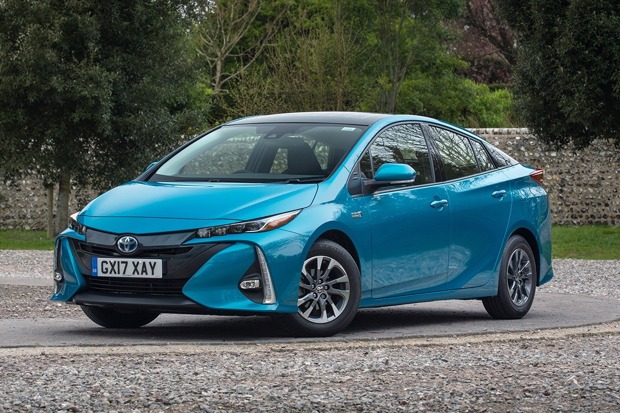
Date: 10 July 2017 | Current mileage: 1785 miles | Claimed economy: 94.1 mpg | Actual economy: 70.3mpg
If you like the Prius but you think hybrids are not clean or environmentally friendly enough, then there’s a solution and it involves more money, a charging socket and a wire. And if you’re feeling particularly flush you can even get solar panels on the roof too. But is the £30,000 Prius Plug-in worth the extra?
It looks very different to the regular Prius, but both vehicles share a lot of tech. The dashboard is the same, as is the 1.8-litre engine and the basic underpinnings. But there are some deep and important changes, including a much higher battery capacity that gives a pure electric range of up to 39 miles.
Importantly it also gives a much higher top speed in pure EV mode, which means many people can travel on the motorway each day without ever needing the petrol engine. With a 16-amp dedicated charger, the battery can be filled from empty in around two hours – or you can just hook up to a three-pin socket and be patient.
So, even if you have an 80-mile daily round trip, you can get to and from work and use barely any fuel, provided there’s a charger at your office. Of course, if you do run out of battery range then the engine kicks in and the Prius Plug-in performs just like any other Prius. Smooth, quiet and relaxed.

The plug-in looks a lot different externally, but shares a lot with the standard hybrid
It does cost a fair bit to get all this extra cleverness though. Like for like, with the same options, a Prius Plug-in costs around £3000 more than a regular Prius, which is more than just pocket change. But, actually, it’s not a huge sum of money to pay for a vehicle that’s so advanced.
However, if you do decide to plump for the plug-in, you’ll find yourself also considering the Volkswagen Golf GTE. That car has a plug-in system too, albeit with a slightly shorter pure electric range. But in its favour, it has a rather more impressive 204PS power output and a more direct DSG gearbox.
That means it’s significantly more enjoyable to drive on a twisting road, while still providing quiet, relaxing dynamics on the motorway or in town. Not quite so smooth and relaxing as a Prius, but not far off. And on the other hand, you can be Captain Planet and get a pure electric Hyundai Ioniq for £28,995.
So yes, the Prius Plug-in is good and priced to compete with its rivals – but if you just want a fuel efficient, easy-going car without the faff of plugging into a socket every time you park up for the night, you might as well just stick to a normal Prius. It’s just as relaxing and still very economical.
The future is now
Volvo recently made a big announcement about its electric car future - but Toyota and Lexus are more or less already there.
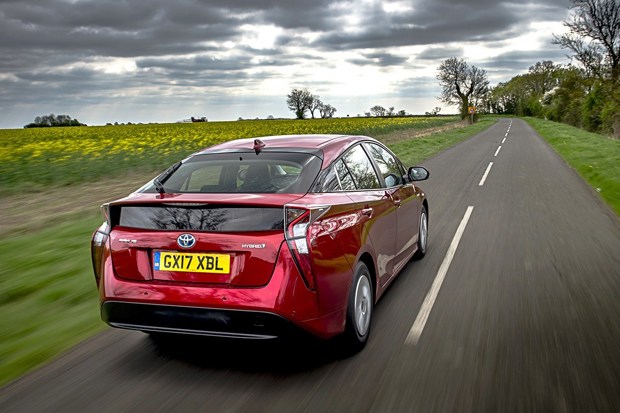
Date: 24 July 2017 | Current mileage: 2069 miles | Claimed economy: 94.1 mpg | Actual economy: 70.1mpg
Volvo recently made the very bold announcement that, from 2019, all of its cars will be electric. Except they won’t. Read beyond the headlines and it becomes clear that Volvo will actually fit a hybrid or mild hybrid system (a posh version of stop/start) to all of its cars from 2019. That’s a bit less messianic.
In Volvo’s defence, it’s a very positive step in the right direction. But Toyota is doing this stuff already and has been for some time, without quite so many grandiose headlines. My Prius is just one of several hybrid models in the current line-up – there’s a RAV4, a Yaris, an Auris and the C-HR hybrid too. Along with the Prius+ and Prius plug-in.
Oh, and that’s before you look at anything from Lexus, Toyota’s luxury arm. Every car it sells in the UK is available with a hybrid engine. Already. And its range of cars is the same size as Volvo’s. And none of the Lexus models on sale today is available with a ‘filthy’ diesel engine either.
In fact, when it comes to diesel power Toyota and Lexus are well ahead of the game. The mainstream media might now be cottoning on to the detrimental effects of diesel fumes but Toyota, quietly, has been turning away from diesel power for years. In fact it even has a car that runs on hydrogen. It's aptly named Mirai, which means future in Japanese. You can read about it here.

Volvo stole the headlines, but really it's playing catch up
You can still get a diesel engine in Toyota commercial vehicles – of course – but most of the diesel engines it sells in its passenger cars are co-developed with BMW. So, despite Toyota being the largest car maker in the world, it doesn't see the point in investing in diesel. That said, from a global perspective, diesel-powered passenger cars are something of a niche restricted largely to Europe.
But from a personal perspective I can see why Toyota doesn't bother much with diesel. Hybrid power makes absolute sense in the modern day and age – you get smooth, quiet performance, enough pace for motorway driving and fuel economy that matches a diesel, but with fewer harmful emissions and less complexity, since there’s no AdBlue and no DPF.
And yes, I did say “in the modern age” before Mr Angry Commenter, West Sussex comes along to remind me that electric cars exist. I know they do. They - like the Hydrogen-powered Mirai, are just too much of a faff right now, especially because my only parking space is away from my house on the opposite side of the street, so I can’t hook up to the mains.
Volvo may have announced that its range will be electrified before long, but it’s clear they won’t be going all-electric within the next 10 years. And neither will Toyota. But it’s already well along that path – and I’m enjoying the results of its hard work with my Prius.
My Prius has Intelligent Park Assist, but it’s often not very intelligent at all.
My Prius has Intelligent Park Assist, but it’s often not very intelligent at all. In fact sometimes it doesn't work full stop.
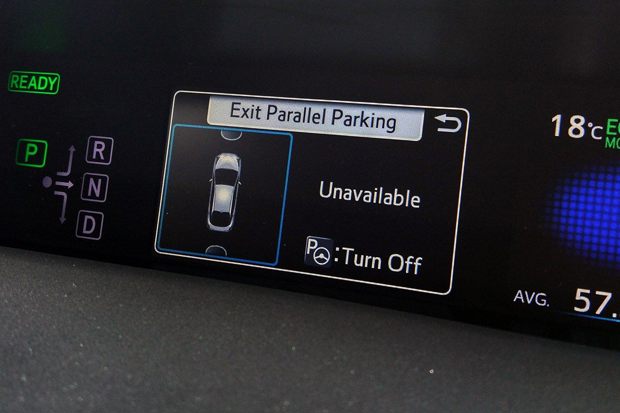
Date: 7 August 2017 | Current mileage: 2671 miles | Claimed economy: 94.1 mpg | Actual economy: 70.1mpg
Our Prius is equipped with a semi-autonomous parking system called Intelligent Park Assist. It’s designed to check the size of parallel or bay parking spaces and - if detects a big enough one - it will operate the steering to get the car into the space.
The driver still has to choose Drive or Reverse and operate the accelerator and brake pedals, but there are prompts to tell you when to stop, move or change gear. In theory it’s all very clever and, when you’re using it to get into a parallel space, it works pretty well.
But for bay parking it’s baffling. When you’re using the system for parallel parking it prompts you to drive along until a sufficiently big space is detected, whereas the bay parking system doesn’t. You have to stop where you think is roughly correct and press the button.
If you’re in the right place then it’ll start the sequence – but if not then you just have to move, try again and hope for the best. Frankly, it’s easier to just reverse into a bay manually, since more often than not the car can’t find the desired space without you stopping and starting over and over.

The reversing camera is welcome, since you can't rely on the automated parking system
Luckily, I’m quite happy to park manually, but some drivers will specify a convenience system like this because they aren’t confident – so it’s quite disappointing. Fortunately it’s not all bad news – there’s a system on the Prius that does its very best to minimise the chances of parking bumps.
The parking sensors don’t just beep to tell you’re about to hit something - they will actually trigger the brakes, bringing the car to an abrupt halt. I know this because the brakes quite regularly apply themselves when I’m reversing in off street car park at home – not because I’m terrible at parking but because they sometimes get confused by long grass.
It’s not a problem though – once you’ve been stopped by the system you can override it and continue back slowly. And it’s quite nice to know the car is looking out for things like low bollards or errant children who might otherwise be out of sight.
They shouldn’t be out of sight though, because the final tool in the parking arsenal of the Prius is a reversing camera. Nothing special about that, these days, but it is at least a nice thing to have that makes reversing a touch easier. Especially since Intelligent Park Assist can be anything but.
Happy 20th, Toyota Prius
The Prius brand has been around since the year 1997 - so what's changed? And will it be here in another 20 years?
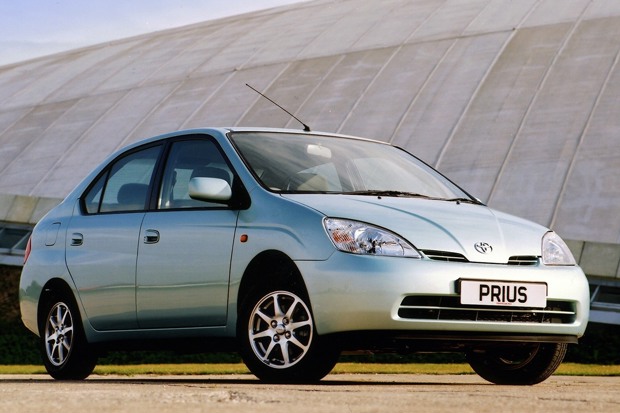
Date: 28 August 2017 | Current mileage: 2691 miles | Claimed economy: 94.1 mpg | Actual economy: 69.8mpg
The Prius is 20. Not my one, specifically – that one’s only about five months – but the Prius brand has been around since the year 1997, Anno Domini. Back then, if you said “hybrid” people would probably assume you were talking about some kind of new horror film starring Forest Whittaker.
Toyota actually first previewed the Prius in 1995, but it didn’t arrive in showrooms until December 1997. Back then it was powered by a 1.5-litre petrol engine, linked to an electric motor and battery pack. It was an “Atkinson cycle” engine, like that in the current Prius – so the formula has broadly remained unchanged for two decades.
Atkinson cycle engines sacrifice power output for improved efficiency but, since there is an electric motor to provide some extra oomph, that deficit in power is counteracted. And that’s the basic principle of the hybrid powertrain in the Prius – the battery and electric motor help the engine out, so it can go about its business without too much of an appetite for fuel.
The first-generation car never really sold that well and was only introduced outside its home Japanese market in 2000. So most people in Britain didn’t really know the name Prius until the second-generation car, launched in 2003. This was altogether more like the Prius we have today in terms of styling, with the trademark high, aerodynamic tailgate.

That's more like it...
The second-generation car used the same 1.5-litre engine as the original, but the electrical system, battery pack, motor and aerodynamics made it more efficient than before. It was replaced by an all-new Prius in 2009, which came with a new 1.8-litre engine and hybrid system, which in turn was improved for the current car, launched in the UK in 2016.
In essence, the principles behind the Prius have remained the same since 1997. It’s meant to be economical above all else, but also a practical family car that’s easy-to-drive and smooth - and it has achieved that since the beginning. In fact, as good as that recipe sounds, Toyota was probably too early with its first-generation car – it wasn’t until the 2000s, when people realised the planet might die, that it really caught on.
More recently, its popularity is likely to be related to the increasing cost of fuel and taxes on car ownership than anything else. A Prius is a cheap car to own and run, especially if you’re a company car driver or business owner. It’s comfortable, relaxed nature is just an added bonus.
Will we still have Prius 20 years from now? Probably – although there’s likely to be a very big difference between that and what we have now. Firstly, it’ll probably no longer be a hybrid, since a petrol engine is going out of the question for a truly eco-friendly car. It’ll probably drive itself though – so at least it’ll still be relaxing and easy.
